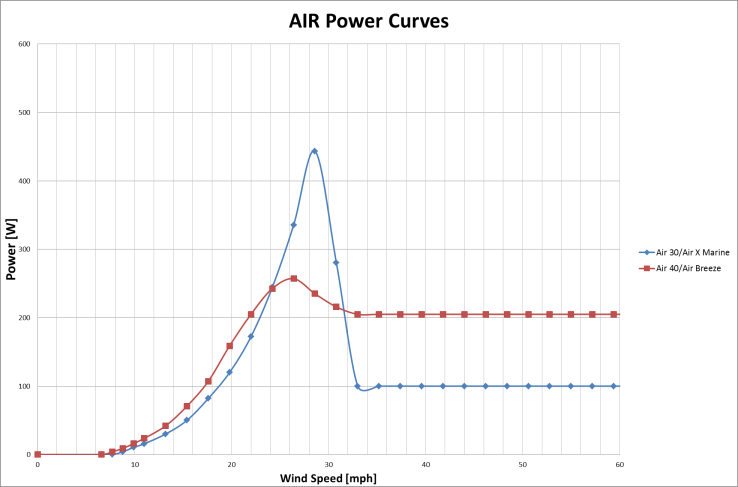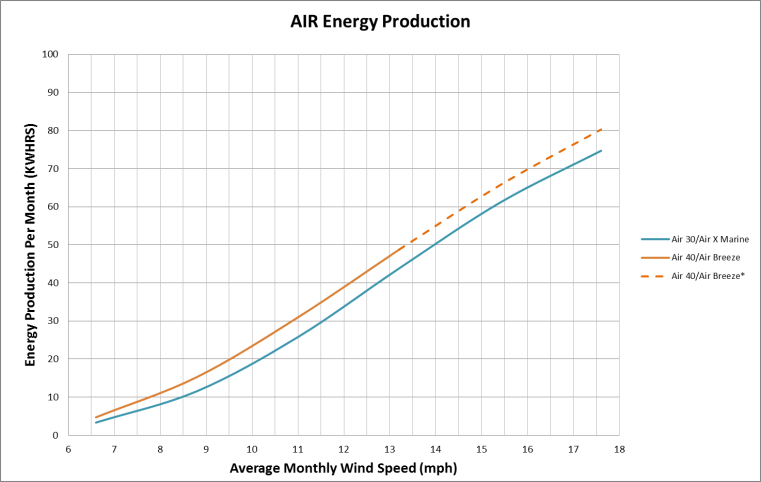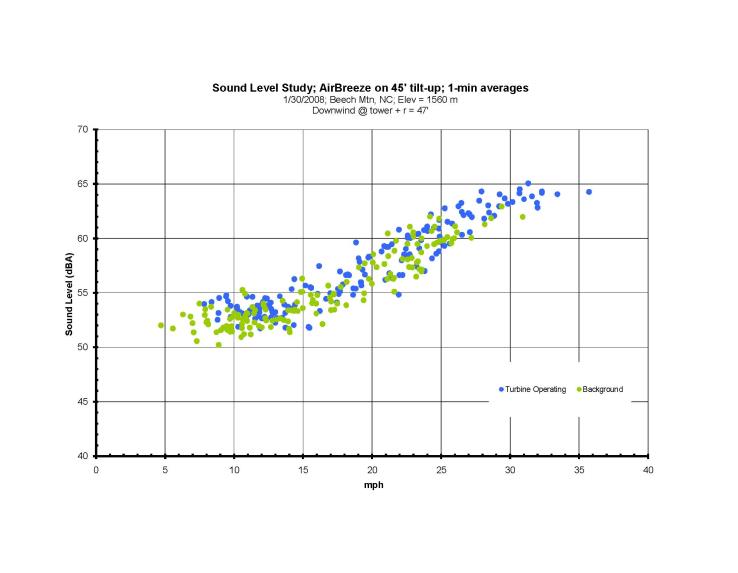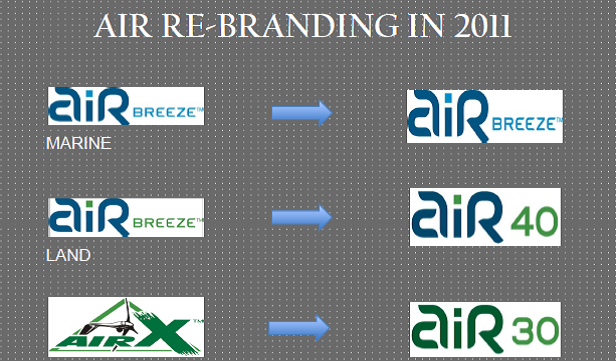WIND TURBINE SYSTEM PRODUCT INFO
A wind turbine system is categorized into three areas. The fourth component, repair parts, only needs to be considered in unique installations, such as sailboats embarking on ocean travel or remote areas where access is limited or shipping spare parts is not practical.
- Wind turbine
- Tower
- Balance of components
- Repair parts
Overview of each:
Turbine:
|
|
Low to moderate winds regimes* <12 mph December wind speeds |
High Wind Regimes 12-15mph average December wind speeds |
Very High Wind Regimes** >15 mph average December wind speeds |
|
Coastal Applications |
Air Breeze |
Air X Marine |
Air X Marine with Tristar 45 and TL-100 diversion load |
|
Inland Applications |
Air 40 |
Air 30 |
Air 30 with Tristar 45 and TL-100 diversion load |
Quiet Operation Higher Sound Emission
*For locations with strict sound requirements, Air 40 or Air Breeze is recommended
**Also for applications where it is desirable that excess energy (full condition battery) be converted to heat
The graph below represents the power curve for the Air 30/Air X Marine and Air 40/Air Breeze wind turbines. Note the improved energy capture at lower wind speeds for the Air 40/Air Breeze. Upon reviewing the product portfolio initially, many are predisposed to select the Air 30/Air X Marine due to its higher peak power capacity. However, the energy capture, amps hours into the battery bank are typically higher for Air 40/Breeze. Having said that, as average wind speeds approach 12 mph (zone 4), it is the threshold point to consider the Air30/X Marine.

The energy curve displays approximate energy production (kw hrs or amp hours) for an average wind speed. Note that the Air 40/Breeze curve becomes dashed. As 12.5mph average wind speed is reached, Air 30 and Air X marine becomes a more appropriate selection. This is due to overspeed protection, a function both turbines have in different capacities. Note that the Air 40/Breeze curve limits around 220 watts versus Air 30/X Marine at 440 watts. The electronics inside the Air Breeze absorb or otherwise manipulate the difference in power between what the wind is providing and the turbine is turning into electrical power. Throughout the turbine’s life, overtaxing this function can have a detrimental impact on the electronics. Aggressive wind regimes should utilize the Air 30 or Air X Marine. In very aggressive wind regimes, a diversion load controller (e.g. Morningstar Tri Star 45) should be utilized in conjunction with a dump load (TL-100). This removes a significant amount of stress from the turbine electronics. It also can provide beneficial heat to dwellings.




Call 303.242.5820 | [email protected]